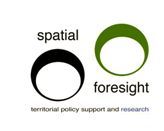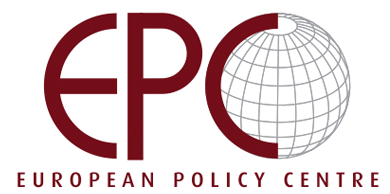By Kjell Nilsson , Thomas Sick Nielsen1, Stephan Pauleit1, Joe Ravetz and Mark Rounsevell, 2008
Changing land use relationships within emerging rural-urban regions and their manifestation in phenomena such as urban sprawl and development of large transport corridors have long-lasting consequences for the regions’ sustainability. The drivers of land use changes and how they interact with regional, national and European policies need to be better understood to minimise negative consequences of urbanisation and to enhance the adaptive capacity of rural-urban regions. Rural-urban regions can become centres of sustainable development, but this requires strategies that are developed by means of participatory planning and decision making.
The scenario framework should fulfil a number of key criteria for use within the PLUREL project, such as being manageable by limiting the number of scenarios, appropriate to the urban-rural issues addressed in PLUREL, and related to the concerns of end users.
High growth scenario (hyper-tech)
This describes a future world of rapid economic growth, global population that peaks in mid-century, and the rapid spread of more efficient technologies. Investment in research and development is high and nations share knowledge and pool resources in a global research market place. Energy prices decline because supply is driven by new developments in renewable energy production and nuclear fission. The shock concerns the rapid acceleration of ICT which transforms home and work as never before. For peri-urban areas in Europe, this scenario is likely to see small »polycentric« towns and cities become even more popular. New transport technologies lead to more rapid journeys and the expansion of the commuting distances around towns and cities. This leads to peri-urbanisation and metropolitanisation of rural areas on a massive scale.
Drivers: rapid development in ICT leading to reduced commuting and transport needs, with no constraints on the location of new build.
Self-reliance scenario (extreme water)
This describes a more heterogeneous world of self reliance and preservation of local identities. While the population increases, economic development is primarily regionally-oriented, and per capita economic growth and technological change are more fragmented and slower than in the other storylines. The shock here is subtitled extreme water, and this sees rapid increase in flooding, drought and sea level rise. A year does not go by without a major event, and in some cities and regions development is seriously constrained. Peri-urban areas are strongly affected; affluent yet vulnerable city-regions such as London or the Dutch Randstad spend huge sums of money on defence and adaptation strategies. Population growth due to climate-induced migration puts more pressure on urban infrastructure and services.
Drivers: climate change reaches a tipping point leading to impacts including rapid sea level rise, flooding and water resource constraints.
Sustainability? scenario (peak oil)
This describes a future of environmental and social consciousness – a global approach to sustainable development, involving governments, businesses, media and households. Economic development is more balanced with rapid investment in resource efficiency, social equity and environmental protection. The »shock« in this scenario is driven by the real possibility of »peak oil«, that is, a decline in global oil production after reaching maximum production, leading to rapid rises in energy prices, with many social and economic effects.For peri-urban areas, high energy prices have an enormous effect on location choices as transport costs limit commuting distances. Although tele working is encouraged, most people attempt to return to larger cities and towns, and more remote rural areas decline.
Drivers: an energy price shock leading to rapidly increasing energy and transport costs and consequent changes in mobility and trade flows.
Fragmentation scenario (walls and enclaves)
Europe sees a fragmentation of society, in terms of age, ethnicity and international distrust. The voter-strong elderly population becomes increasingly dependent on the younger generation, but the working-age population is disinclined to transfer their resources, with growing intergenerational conflicts.The »shock« in this scenario will be an accelerated development towards fragmentation and social exclusion in Europe. The ethnic division of cities is driven by the increased in-migration of the working-age population from outside and within the European Union. Cities become more dispersed as younger migrants dominate city centres and older natives populate the outskirts and enclaves outside the cities – so that peri-urban areas become peri-society areas.
Drivers: low growth and accelerated fragmentation leading to behavioural shifts within society.





